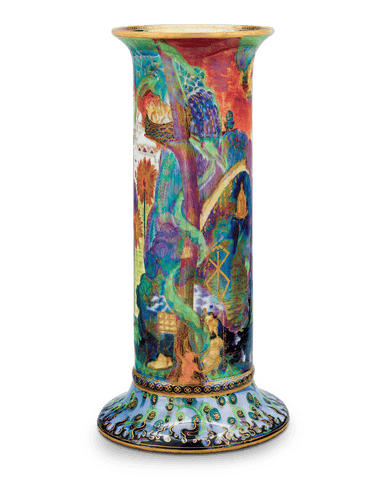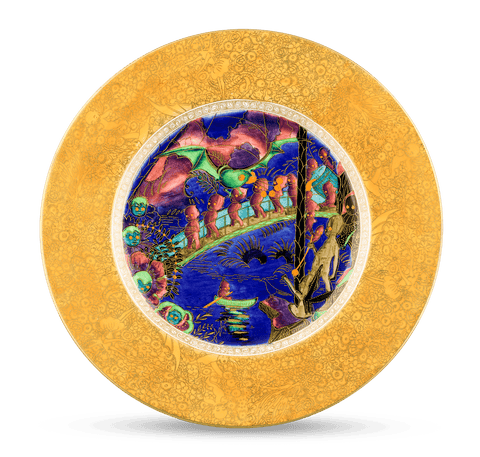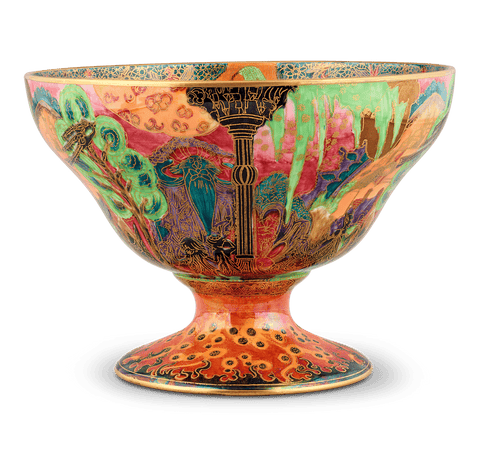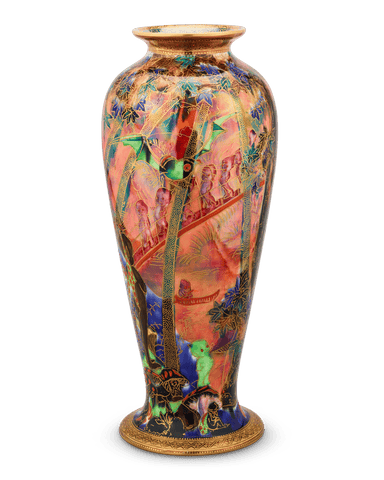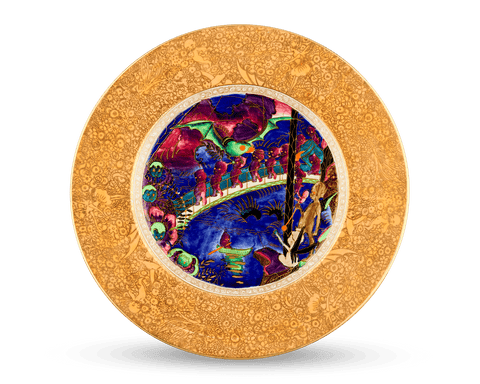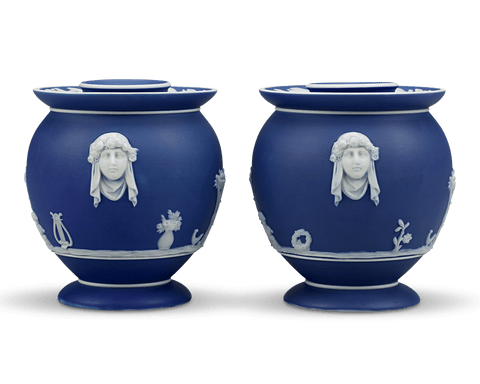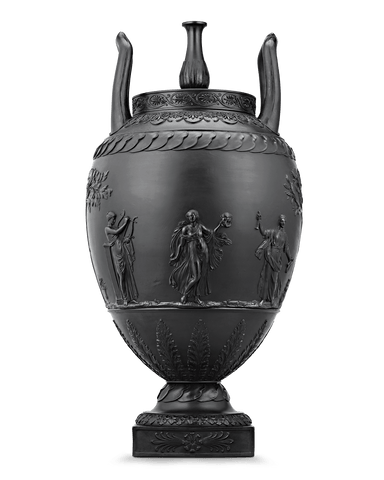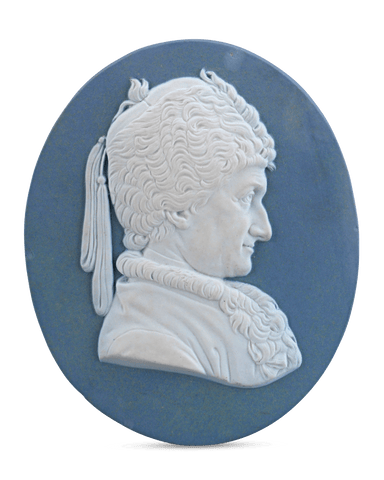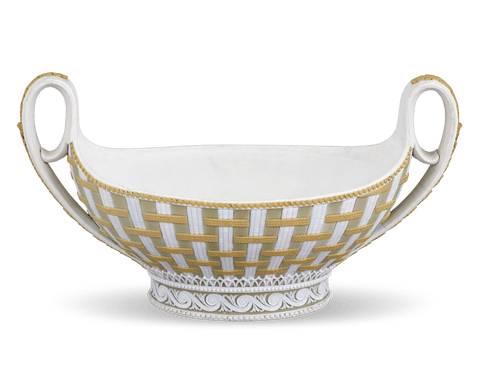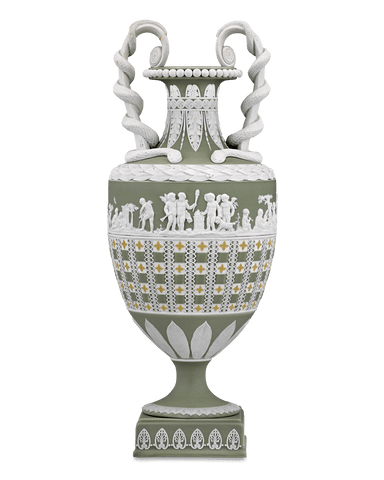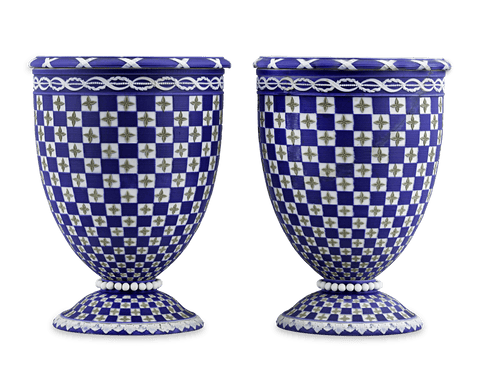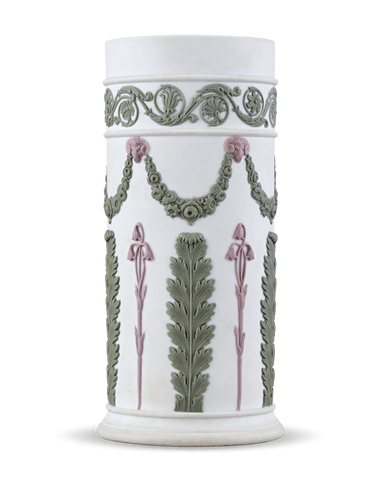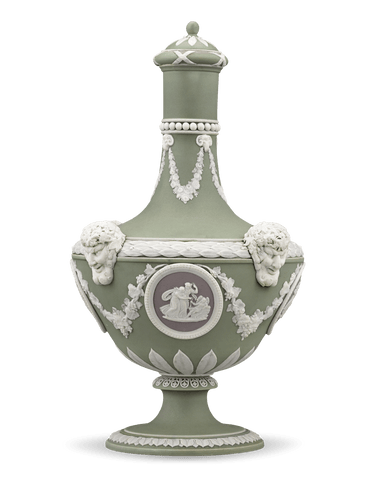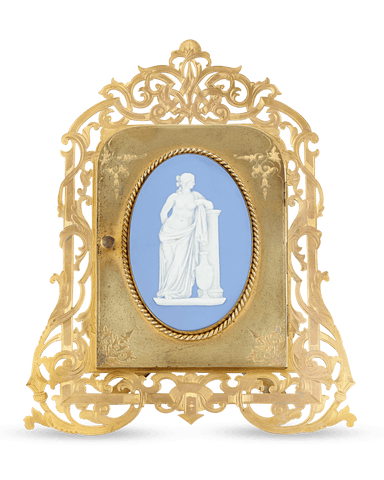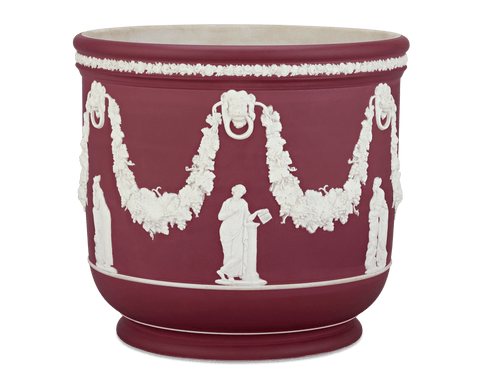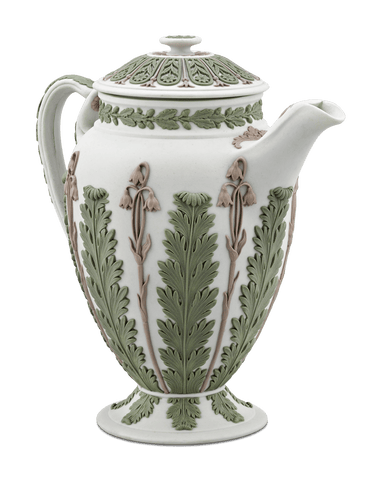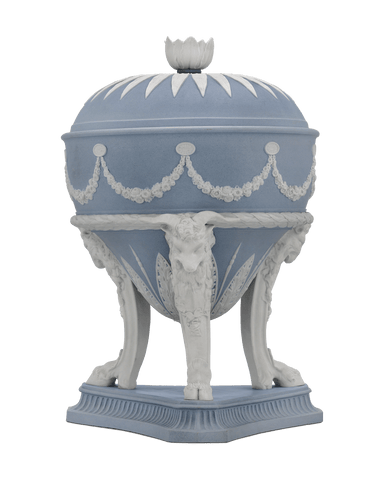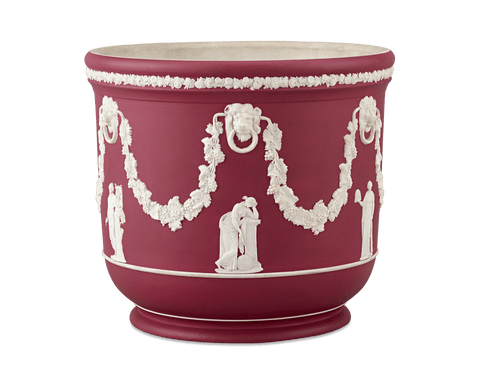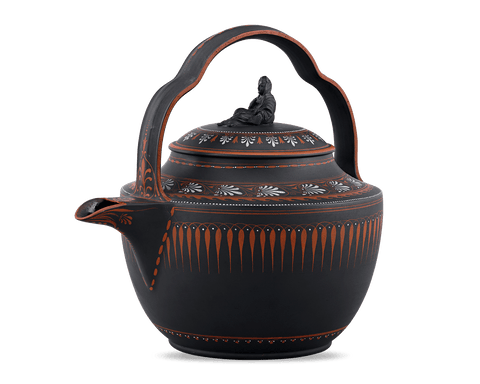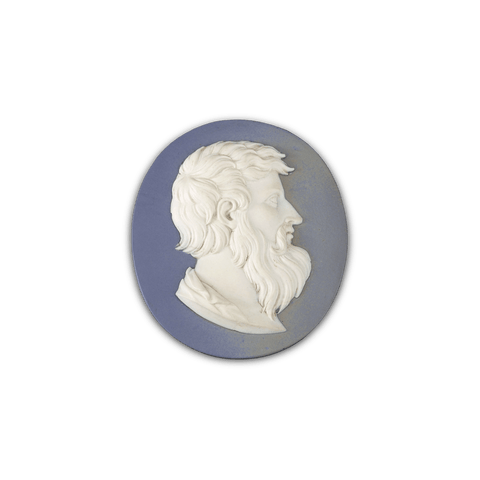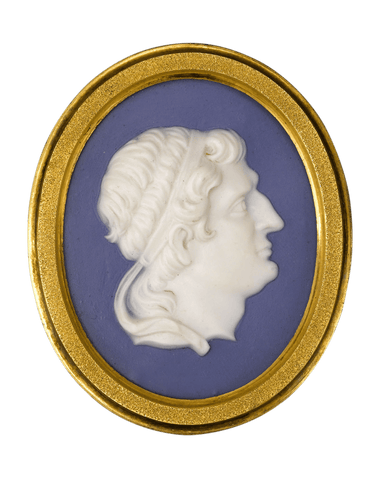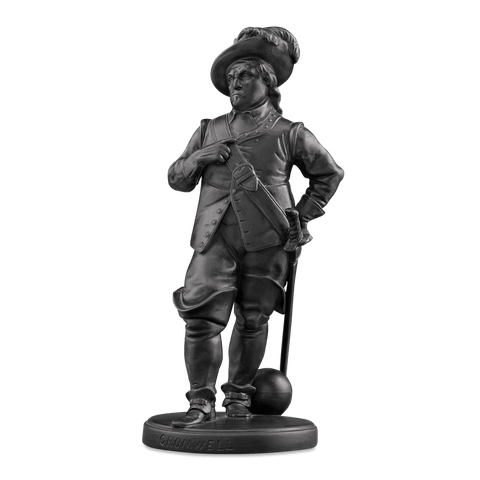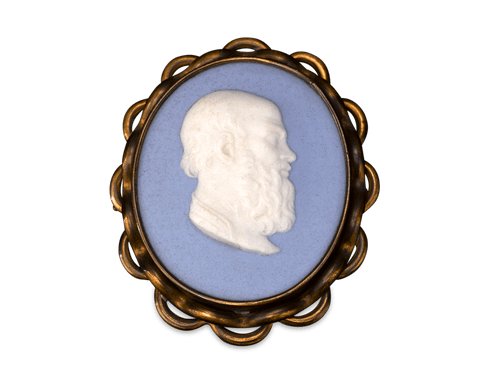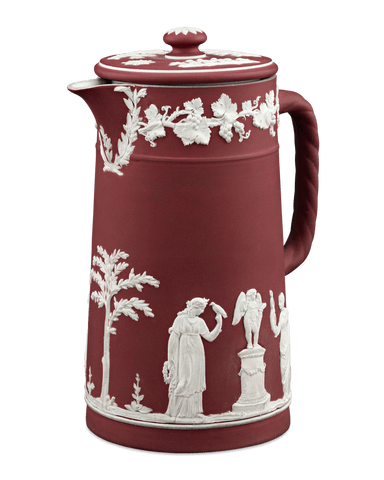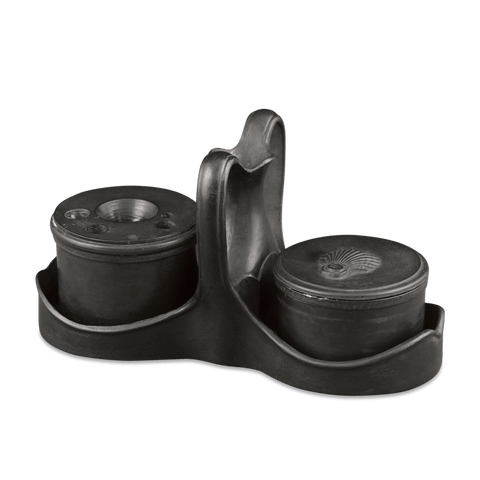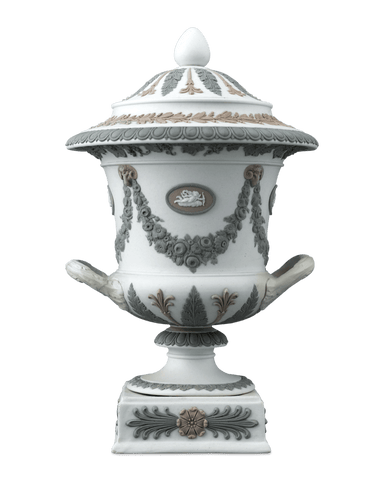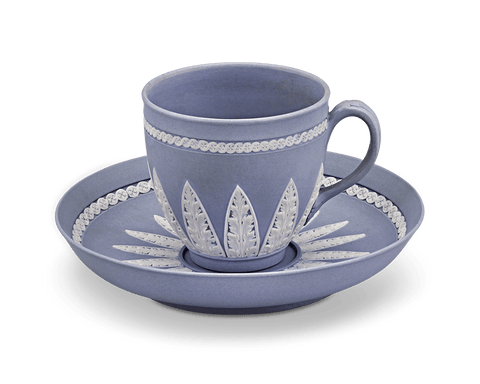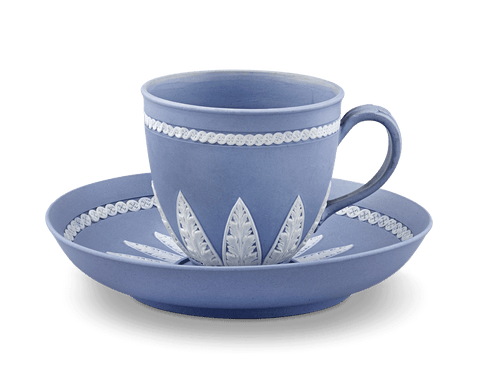Artists & Artisans
Wedgwood
Wedgwood, established on May 1, 1759, by Josiah Wedgwood, is a renowned English manufacturer of fine china, porcelain and luxury accessories. Originally incorporated as Josiah Wedgwood and Sons Ltd. in 1895, it quickly became one of Staffordshire's largest pottery manufacturers, known for spreading British ceramic art worldwide. Wedgwood's signature Jasperware, featuring dry-bodied stoneware in contrasting colors like "Wedgwood blue" and white, has been a staple since 1775. The company received a Royal Warrant from Queen Elizabeth II in 1995.
Early history
In 1759, Josiah Wedgwood who came from an established family of potters, started his own pottery venture at Ivy House in Burslem, Stoke-on-Trent, aided by his marriage to his cousin Sarah Wedgwood and her dowry.
By 1765, he created a new kind of creamware, later called "Queen's Ware" with royal endorsement from Queen Charlotte who ordered a tea set for twelve. This is the first example of a celebrity product endorsement, a marketing strategy commonly used today. Later, cobalt was added to the recipe-producing pearlware which sold extremely well across Europe and in America, thanks in part to its light weight which lowered transport and tariff costs.
Wedgwood's innovations included precise kiln temperature measurement and various unglazed ceramics such as "dry-body" stonewares, black basalt, caneware and jasperware which became among the company's best-known designs. Jasperware, notably in "Wedgwood Blue," gained fame for its resemblance to ancient cameo glass. Partnering with Thomas Bentley in 1769, he excelled in ornamental wares. Wedgwood pioneered transfer printing which was much cheaper than hand painting.
Completed in 1774, Wedgwood produced the hand-painted Frog Service for Empress Catherine the Great. Though the company barely profited from it, Josiah Wedgwood showed the commission in his London Showroom before delivery to establish his brand’s association with royalty.
Josiah Wedgwood's innovative pyrometric beads led to his election to the Royal Society, the United Kingdom's National Academy of Sciences, in 1783.
Style
Wedgwood diverged from the Staffordshire figures popularized by the German manufacturer Meissen, opting instead for sculptural busts and portrait plaques of serious subjects such as politicians and royalty, and political themes including abolitionism. Neoclassical plaques, often crafted in jasperware, became popular for jewelry and decor. Reflecting his Unitarian and somewhat Radical views, Wedgwood's works included the famous abolitionist relief Am I Not a Man and a Brother?.
Numerous motifs were drawn from ancient mythologies, including Roman, Greek and Egyptian sources. Concurrently, a fervor for archaeology captivated many artists. To meet the substantial demand in the market, the production of replicas of ancient artifacts proved particularly fitting. Wedgwood operated a studio in Rome from 1787 to 1794, employing young Neoclassical artists who crafted wax models for reliefs based on designs from England. The studio's most renowned creation was Wedgwood's replica of the Portland Vase, a celebrated Roman artifact currently housed in the British Museum.
Family lineage
After the deaths of Bentley in 1780 and Josiah Wedgwood's retirement in 1790, the firm's productivity slowed. By 1800, it had around 300 employees in Staffordshire. The Napoleonic Wars disrupted European exports, and the firm faced financial challenges. Josiah's nephew, Thomas Byerley, took charge alongside Josiah's sons, John, known as Jack, and Josiah II, known as Joss, who were more interested in horticulture than pottery. Byerley's death in 1810 led to financial strain. After Waterloo in 1815, exports to America declined sharply, and Joss bought out Jack and became the sole owner.
Under Jack and his son Francis Wedgwood, the Wedgwood factory expanded dramatically, employing 445 workers by 1859. While continuing traditional wares, they also ventured into bathroom ceramics such as sinks. During this time, they introduced porcelain, lustre ware and Stone China, though the latter was less successful. Neoclassical styles waned, prompting the addition of floral enamels to black basalt wares. Godfrey Wedgwood, Josiah I's great-grandson, joined as a partner in 1859, rejuvenating the firm and contributing to a successful period for British pottery.
The company continued to pass through the family lineage. Godfrey’s brothers Clement and Laurence were both partners and their sons, Major Cecil Wedgwood, Kennard Laurence Wedgwood and Francis Hamilton Wedgwood, would go on to manage as well. Kennard, son of Laurence Wedgwood, went to the United States and set up the firm's New York office in 1906, which became Josiah Wedgwood and Sons USA, an incorporated subsidiary, in 1919.
Fairyland Lustre
Susannah Margaretta "Daisy" Makeig-Jones (1881–1945) was a celebrated pottery designer for Wedgwood, renowned for her Fairyland Lustre series. Born in Yorkshire, she joined Wedgwood in 1909 and began designing tableware in 1911. Her imaginative Fairyland Lustre designs were introduced in 1915 and gained popularity, particularly during the Roaring 20s in America and wartime Europe. Amidst the war's turmoil, many Europeans sought escapism, finding it in the whimsical imagery of goblins and fairies.
Makeig-Jones's ascent at Wedgwood was atypical, not just due to her gender, but also because she advanced from within the company, diverging from Wedgwood's typical practice of recruiting renowned designers externally. Her luxurious and playful designs fell out of fashion during the Great Depression and only became coveted collector's items after the turn of the century. Today, Fairyland Lustre items are in the permanent collections of major museums around the world.
Continued legacy
Baron Wedgwood served as the firm's managing director from 1930 to 1968, credited with revitalizing its fortunes. He spearheaded the strategic move of production to a modern, purpose-built factory in Barlaston, which was designed by Keith Murray in 1936 and constructed with the assistance of Norman Wilson. Succeeding him, Arthur Bryan, later Sir Arthur, became the first non-family member to lead the company. Bryan advocated for the company's public listing on the London Stock Exchange in 1967, a decision opposed by Wilson.
In 1968, Wedgwood acquired numerous Staffordshire potteries, including Mason's Ironstone, Johnson Brothers, Royal Tuscan, William Adams & Sons, J. & G. Meakin, and Crown Staffordshire.
In 1986, the Waterford Glass Group purchased Wedgwood for $360 million and later renamed it Waterford Wedgwood. Patrick Byrne, formerly of Ford, served as CEO from early 1987 to early 1989, streamlining operations by selling non-core businesses and reducing the number of Wedgwood patterns from over 400 to about 240. The company changed leadership multiple times through the 90s and early 2000s, and in March 2009, KPS Capital Partners acquired the assets of the Waterford Wedgwood group, including Wedgwood, Waterford and Royal Doulton, were placed into WWRD Holdings Limited. Wedgwood’s company collection was saved from sale through donations and was purchased by the Victoria and Albert Museum in 2014, where it remains on display at the Wedgwood Museum.
Quick Facts
- Many common sales techniques such as direct mail, money-back guarantee, free delivery, celebrity endorsement, illustrated catalogs and buy one get one free were invented by Josiah Wedgwood.
- From 1787 until his death in 1795, Josiah Wedgwood actively participated in the Abolition of Slavery.
- Charles Darwin was Josiah Wedgwood's grandson.
Artists & Artisans
Wedgwood
Wedgwood, established on May 1, 1759, by Josiah Wedgwood, is a renowned English manufacturer of fine china, porcelain and luxury accessories. Originally incorporated as Josiah Wedgwood and Sons Ltd. in 1895, it quickly became one of Staffordshire's largest pottery manufacturers, known for spreading British ceramic art worldwide. Wedgwood's signature Jasperware, featuring dry-bodied stoneware in contrasting colors like "Wedgwood blue" and white, has been a staple since 1775. The company received a Royal Warrant from Queen Elizabeth II in 1995.
Early history
In 1759, Josiah Wedgwood who came from an established family of potters, started his own pottery venture at Ivy House in Burslem, Stoke-on-Trent, aided by his marriage to his cousin Sarah Wedgwood and her dowry.
By 1765, he created a new kind of creamware, later called "Queen's Ware" with royal endorsement from Queen Charlotte who ordered a tea set for twelve. This is the first example of a celebrity product endorsement, a marketing strategy commonly used today. Later, cobalt was added to the recipe-producing pearlware which sold extremely well across Europe and in America, thanks in part to its light weight which lowered transport and tariff costs.
Wedgwood's innovations included precise kiln temperature measurement and various unglazed ceramics such as "dry-body" stonewares, black basalt, caneware and jasperware which became among the company's best-known designs. Jasperware, notably in "Wedgwood Blue," gained fame for its resemblance to ancient cameo glass. Partnering with Thomas Bentley in 1769, he excelled in ornamental wares. Wedgwood pioneered transfer printing which was much cheaper than hand painting.
Completed in 1774, Wedgwood produced the hand-painted Frog Service for Empress Catherine the Great. Though the company barely profited from it, Josiah Wedgwood showed the commission in his London Showroom before delivery to establish his brand’s association with royalty.
Josiah Wedgwood's innovative pyrometric beads led to his election to the Royal Society, the United Kingdom's National Academy of Sciences, in 1783.
Style
Wedgwood diverged from the Staffordshire figures popularized by the German manufacturer Meissen, opting instead for sculptural busts and portrait plaques of serious subjects such as politicians and royalty, and political themes including abolitionism. Neoclassical plaques, often crafted in jasperware, became popular for jewelry and decor. Reflecting his Unitarian and somewhat Radical views, Wedgwood's works included the famous abolitionist relief Am I Not a Man and a Brother?.
Numerous motifs were drawn from ancient mythologies, including Roman, Greek and Egyptian sources. Concurrently, a fervor for archaeology captivated many artists. To meet the substantial demand in the market, the production of replicas of ancient artifacts proved particularly fitting. Wedgwood operated a studio in Rome from 1787 to 1794, employing young Neoclassical artists who crafted wax models for reliefs based on designs from England. The studio's most renowned creation was Wedgwood's replica of the Portland Vase, a celebrated Roman artifact currently housed in the British Museum.
Family lineage
After the deaths of Bentley in 1780 and Josiah Wedgwood's retirement in 1790, the firm's productivity slowed. By 1800, it had around 300 employees in Staffordshire. The Napoleonic Wars disrupted European exports, and the firm faced financial challenges. Josiah's nephew, Thomas Byerley, took charge alongside Josiah's sons, John, known as Jack, and Josiah II, known as Joss, who were more interested in horticulture than pottery. Byerley's death in 1810 led to financial strain. After Waterloo in 1815, exports to America declined sharply, and Joss bought out Jack and became the sole owner.
Under Jack and his son Francis Wedgwood, the Wedgwood factory expanded dramatically, employing 445 workers by 1859. While continuing traditional wares, they also ventured into bathroom ceramics such as sinks. During this time, they introduced porcelain, lustre ware and Stone China, though the latter was less successful. Neoclassical styles waned, prompting the addition of floral enamels to black basalt wares. Godfrey Wedgwood, Josiah I's great-grandson, joined as a partner in 1859, rejuvenating the firm and contributing to a successful period for British pottery.
The company continued to pass through the family lineage. Godfrey’s brothers Clement and Laurence were both partners and their sons, Major Cecil Wedgwood, Kennard Laurence Wedgwood and Francis Hamilton Wedgwood, would go on to manage as well. Kennard, son of Laurence Wedgwood, went to the United States and set up the firm's New York office in 1906, which became Josiah Wedgwood and Sons USA, an incorporated subsidiary, in 1919.
Fairyland Lustre
Susannah Margaretta "Daisy" Makeig-Jones (1881–1945) was a celebrated pottery designer for Wedgwood, renowned for her Fairyland Lustre series. Born in Yorkshire, she joined Wedgwood in 1909 and began designing tableware in 1911. Her imaginative Fairyland Lustre designs were introduced in 1915 and gained popularity, particularly during the Roaring 20s in America and wartime Europe. Amidst the war's turmoil, many Europeans sought escapism, finding it in the whimsical imagery of goblins and fairies.
Makeig-Jones's ascent at Wedgwood was atypical, not just due to her gender, but also because she advanced from within the company, diverging from Wedgwood's typical practice of recruiting renowned designers externally. Her luxurious and playful designs fell out of fashion during the Great Depression and only became coveted collector's items after the turn of the century. Today, Fairyland Lustre items are in the permanent collections of major museums around the world.
Continued legacy
Baron Wedgwood served as the firm's managing director from 1930 to 1968, credited with revitalizing its fortunes. He spearheaded the strategic move of production to a modern, purpose-built factory in Barlaston, which was designed by Keith Murray in 1936 and constructed with the assistance of Norman Wilson. Succeeding him, Arthur Bryan, later Sir Arthur, became the first non-family member to lead the company. Bryan advocated for the company's public listing on the London Stock Exchange in 1967, a decision opposed by Wilson.
In 1968, Wedgwood acquired numerous Staffordshire potteries, including Mason's Ironstone, Johnson Brothers, Royal Tuscan, William Adams & Sons, J. & G. Meakin, and Crown Staffordshire.
In 1986, the Waterford Glass Group purchased Wedgwood for $360 million and later renamed it Waterford Wedgwood. Patrick Byrne, formerly of Ford, served as CEO from early 1987 to early 1989, streamlining operations by selling non-core businesses and reducing the number of Wedgwood patterns from over 400 to about 240. The company changed leadership multiple times through the 90s and early 2000s, and in March 2009, KPS Capital Partners acquired the assets of the Waterford Wedgwood group, including Wedgwood, Waterford and Royal Doulton, were placed into WWRD Holdings Limited. Wedgwood’s company collection was saved from sale through donations and was purchased by the Victoria and Albert Museum in 2014, where it remains on display at the Wedgwood Museum.
Quick Facts
- Many common sales techniques such as direct mail, money-back guarantee, free delivery, celebrity endorsement, illustrated catalogs and buy one get one free were invented by Josiah Wedgwood.
- From 1787 until his death in 1795, Josiah Wedgwood actively participated in the Abolition of Slavery.
- Charles Darwin was Josiah Wedgwood's grandson.
